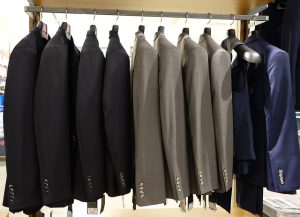By Brett Rounsaville, CEO of Yes, More & Co.
It’s tough to overstate how much ecommerce has redefined impulse purchasing. Once upon a time, impulse buys were mostly limited to gum or candy bars strategically placed at the checkout line. Today, studies indicate that more than 40% of all ecommerce purchases qualify as impulse buys.
(Believe it or not, 40% of all ecommerce purchases are not candy and gum…so what’s going on?)
Modern impulse buys are slip-on shoes, trendy water bottles, or even bidets introduced through Instagram ads. They’re kitchen knives and elegant notebooks delivered directly to your phone via SMS campaigns. And yeah, sure, sometimes they’re still candy. But less than you’d think.
Consumer psychology, behavioral economics, and game design have replaced proximity to checkout as the leading cause of impulse purchases and, if done right, the consumer gets a jolt of delight instead of fresh cavities.
Strategies for Enhancing the Impulse Buying Experience
For retailers, the challenge is to create an environment where impulse buying isn’t just a quick revenue grab but a delightful, memorable experience that the consumer will talk about with their friends. Remember, “don’t tell people a story, give people a story to tell.”
Here are some key strategies to consider:
- Personalization: Segmenting by demographics are obvious table stakes these days. Tailoring offers based on past purchases and browsing history makes each recommendation feel like it was made just for you, but don’t sleep on the fact that there is an entire subset of every person’s spend that is dedicated to buying for others and those purchases don’t just feel good, they make you feel good about yourself when you’re the buyer!
When an online store knows your style, that impulse purchase can feel like it was driven by a friendly suggestion rather than an aggressive sales tactic, but can you spark that same feeling by making some educated guesses about the consumer’s spouse or significant other’s style? That’s when magic can happen.
- Engaging Visuals and Content: A striking image or an engaging video can capture attention instantly. High-quality visuals paired with creative storytelling draw customers in, turning a simple scroll session into a mini-adventure, but we can do even better.
It’s not just high-quality visuals, it’s high-quality unexpected visuals that bring that surprise and joy to a potential impulse purchase. Where can you zig where everyone else is zagging?
Consider your audience, the medium they’re seeing your content in, and the type of content they’re seeing from potential competitors in that medium. Sometimes the answer is as simple or crazy as, “Everyone is posting polished photos of sparkling sneakers on pedestals, what’s the opposite of that? Maybe we need a high quality image of a worn out shoe in a cardboard box. Is that more eye-catching just by dint of going against the status quo? Does it tell a story?
- Limited-Time Offers and Exclusive Deals: Of course, creating a sense of urgency is still a tried and true way to motivate customers to act immediately. However, it’s vital that these offers are genuine and add real value, so the excitement doesn’t turn into buyer’s remorse. Or, worse, you squander trust and wear out your welcome. No one has a sense of urgency if they don’t believe that anything urgent is happening. In the long run, it’s better to underbuy demand and leave people wanting more than to fake urgency.
Double bonus points if the customer gets to feel like the limited time offer is something they only get access to because they’re part of the in-crowd.
- Streamlined Checkout Processes: Coming from a background in app design, I tend to think of purchase flows the same way I think of a user onboarding flow.
Every little step, no matter how small, is going to come with drop off. Each layer, each field, each button is going to chip away a small percentage of users who just aren’t going to convert now, despite them coming into the process with intent. A smooth, intuitive checkout not only prevents abandoned carts but also reinforces the positive experience initiated by the impulse buy.
At Yes, More & Co we tripled down on this philosophy by stripping out every single element of checkout possible. We send you a text message featuring a product we think you’ll love, if you like what you see, all you do is text back YES. That’s it. Completely frictionless ecommerce with a sense of urgency, surprise-and-delight, and a magically checkout experience. Just type in three letters and it shows up at your door.
- Interactive and Gamified Experiences: Integrating game-like features, think reward-based challenges, can turn shopping into an engaging game. When buying feels fun, it’s not just a means to an end, it becomes a part of the overall brand experience.
Circling back to personalization for a moment, there’s also a game design concept called “variable rewards” that is a very powerful tool. A variable reward is any reward that a person receives on an unpredictable cadence and in varying degrees and does more to keep users engaged in counterintuitive ways that most people realize.
The anticipation of a reward heightens the reception of the reward and primes folks to wait for the next one. Why is this important for personalization? Our own internal statistics give us every reason to believe that you can do too good of a job personalizing offers and, in fact, a user is more likely to continue to use your service if the personalization benefits are a variable reward. Meaning, if an item or two isn’t a great fit but the third offer is perfect, the serendipity will seem that much more magical.
Balancing Revenue with Customer Delight
While the primary goal of encouraging impulse purchases is to drive revenue, it’s crucial that these quick buys also contribute to overall customer satisfaction. The best impulse buying strategies make the consumer feel smart and delighted, rather than pressured or manipulated.
To strike this balance, retailers must focus on authenticity and relevance. The products and deals pushed through impulse channels should genuinely resonate with the customer’s lifestyle and needs. This means investing in quality products and ensuring that promotions are backed by real value. When customers feel that an impulse buy was a well-considered choice that brought them joy, it builds trust and lays the groundwork for repeat business.
About author
 Brett Rounsaville is the founder and CEO of Yes, More & Co., a modern retail brand that curates high-quality, globally sourced products at accessible price points. Known for his innovative approach to commerce, Brett previously designed theme park experiences for Disney and later embarked on a year-long journey across North America, completing 50 personal challenges as part of his “Amtrekker” project. His diverse background, including roles in game design and storytelling, informs his unique perspective on retail and consumer engagement.
Brett Rounsaville is the founder and CEO of Yes, More & Co., a modern retail brand that curates high-quality, globally sourced products at accessible price points. Known for his innovative approach to commerce, Brett previously designed theme park experiences for Disney and later embarked on a year-long journey across North America, completing 50 personal challenges as part of his “Amtrekker” project. His diverse background, including roles in game design and storytelling, informs his unique perspective on retail and consumer engagement.
Related Articles

The New Frugality: How Inflation and Tariffs Are Reshaping Consumer Spending
One of the most telling shifts is how shoppers approach decision-making. Where convenience once dominated, consciousness now plays a larger role. People are researching more before making a purchase, comparing prices across multiple platforms, and questioning whether they really need the product in the first place.

Embracing new concepts vs the return to brick-and-mortar
Balancing the return to physical retail and the development of new technologies to enhance customer experience and drive operational efficiency for long-term success.
Enartis to Acquire Parsec in Winemaking and Retail Deal
The deal will bring Enartis and Parsec together to help wineries manage every part of production more easily and efficiently, from grape to bottle.

A Practical Guide to Retail AI Use Policies for Retailers and HQ Teams
AI can bring new opportunities for retailers, but this innovation must come with responsibility.


 for the latest news and job opportunities in retail tech
for the latest news and job opportunities in retail tech 